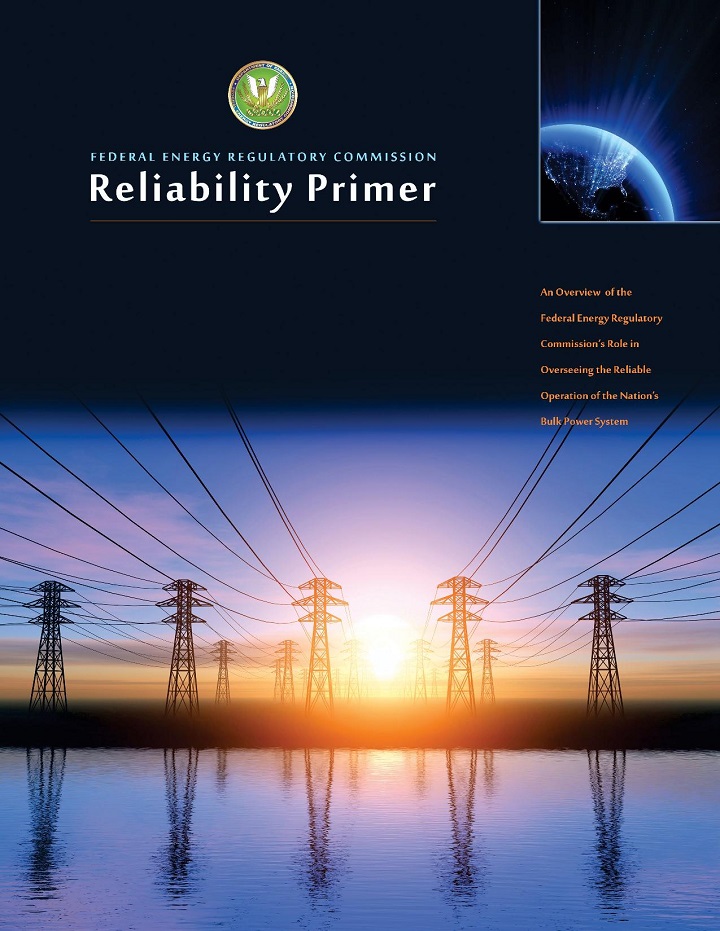“When buying and selling are controlled by legislation,
the first things to be bought and sold are legislators.”
— P.J. O’Rourke
“Federal Power Act” | June 10, 1920, Chapter 285 of the 66th Congress]
The Federal Energy Regulatory Commission is an independent agency within the U.S. federal government that regulates interstate transmission of electricity, natural gas, and oil. It oversees wholesale energy markets, pipeline infrastructure, and hydroelectric projects, ensuring fair rates and reliability. While independent, FERC operates under the Department of Energy’s umbrella but does not take direct orders from the executive branch.
FERC enforces energy laws, approves infrastructure projects, and regulates market competition. FERC plays a crucial role in balancing economic, environmental, and energy security concerns, aiming to maintain a stable and efficient energy system across the United States. Since the U.S. shares interconnected electricity grids with Canada and Mexico, FERC’s decisions on transmission rules and pricing affect energy flows and grid reliability in both countries.
Our interest lies in closing a technical gap that exists upstream from the building service point and downstream from the utility supply point. Some, not all of it, can be accomplished with titles in the IEEE catalog.
Given the dominance of vertical incumbents in the electric power domain, we have submitted a tranche of reliability concepts into the ASHRAE, NFPA and ICC catalogs — not so much with the expectation that they will be gratefully received — but that our proposals will unleash competitive energies among developers of voluntary consensus standards.
One of our proposals was heard at the April-May and October meetings of the International Code Council. We are happy to discuss the outcome of that proposal any day at the usual hour.
Commissioner-Led Reliability Technical Conference Agenda: October 16, 2024, 10:00 AM
Nothing happened in August
Technical Conference RE: Large Loads Co-Located at Generating Facilities: November 1, 10AM EDT
Echo Chamber Synonyms: mutual admiration society, self congratulatory club,
back patting session, congratulatory loop, closed loop of praise, reciprocal praise fest,
feedback bubble, endless validation cycle, compliment carousel.
Transmission Planning Using a Reliability Criterion
In power system engineering, availability and reliability are two important concepts, but they refer to different aspects of the system’s performance.
Reliability:
- Reliability refers to the ability of a power system to perform its intended function without failure for a specified period under given operating conditions. It is essentially a measure of how dependable the system is.
- Reliability metrics often include indices such as the frequency and duration of outages, failure rates, mean time between failures (MTBF), and similar measures.
- Reliability analysis focuses on identifying potential failure modes, predicting failure probabilities, and implementing measures to mitigate risks and improve system resilience.Availability:
- Availability, on the other hand, refers to the proportion of time that a power system is operational and able to deliver power when needed, considering both scheduled and unscheduled downtime.
- Availability is influenced by factors such as maintenance schedules, repair times, and system design redundancies.
- Availability is typically expressed as a percentage and can be calculated using the ratio of the uptime to the total time (uptime plus downtime).
- Availability analysis aims to maximize the operational readiness of the system by minimizing downtime and optimizing maintenance strategies.
Reliability focuses on the likelihood of failure and the ability of the system to sustain operations over time, while availability concerns the actual uptime and downtime of the system, reflecting its readiness to deliver power when required. Both concepts are crucial for assessing and improving the performance of power systems, but they address different aspects of system behavior.
November 2023 Highlights | FERC insight | Volume 10
Determining System and Subsystem Availability Requirements: Resource Planning and Evaluation
Comment: These 1-hour sessions tend to be administrative in substance, meeting the minimum requirements of the Sunshine Act. This meeting was no exception. Access to the substance of the docket is linked here.
Noteworthy: Research into the natural gas supply following Winter Storm Elliot.
UPDATED POLICIES ON U.S. DECARBONIZATION AND TECHNOLOGY TRANSITIONS![]()
June 15:FERC Finalizes Plans to Boost Grid Reliability in Extreme Weather Conditions
On Monday June 13th, Federal Energy Regulatory Commission commissioners informed the House Committee on Energy and Commerce that the “environmental justice” agenda prohibits reliable dispatchable electric power needed for national power security. One megawatt of natural gas generation does not equal one megawatt of renewable generation. The minority party on the committee — the oldest standing legislative committee in the House of Representatives (established 1795) — appears indifferent to the reliability consequences of its policy.
Joint Federal-State Task Force on Electric Transmission
“Our nation’s continued energy transition requires the efficient development of new transmission infrastructure. Federal and state regulators must address numerous transmission-related issues, including how to plan and pay for new transmission infrastructure and how to navigate shared federal-state regulatory authority and processes. As a result, the time is ripe for greater federal-state coordination and cooperation.”
Bibliography:
Natural Gas Policy Act of 1978
Glossary of Terms Used in NERC Reliability Standards
The Major Questions Doctrine and Transmission Planning Reform
As utilities spend billions on transmission, support builds for independent monitoring
States press FERC for independent monitors on transmission planning, spending as Southern Co. balks
Related:
At the July 20th meeting of the Federal Energy Regulatory Commission Tristan Kessler explained the technical basis for a Draft Final Rule for Improvements to Generator Interconnection Procedures and Agreements, On August 16th the Commission posted a video reflecting changes in national energy policy since August 14, 2003; the largest blackout in American history.











